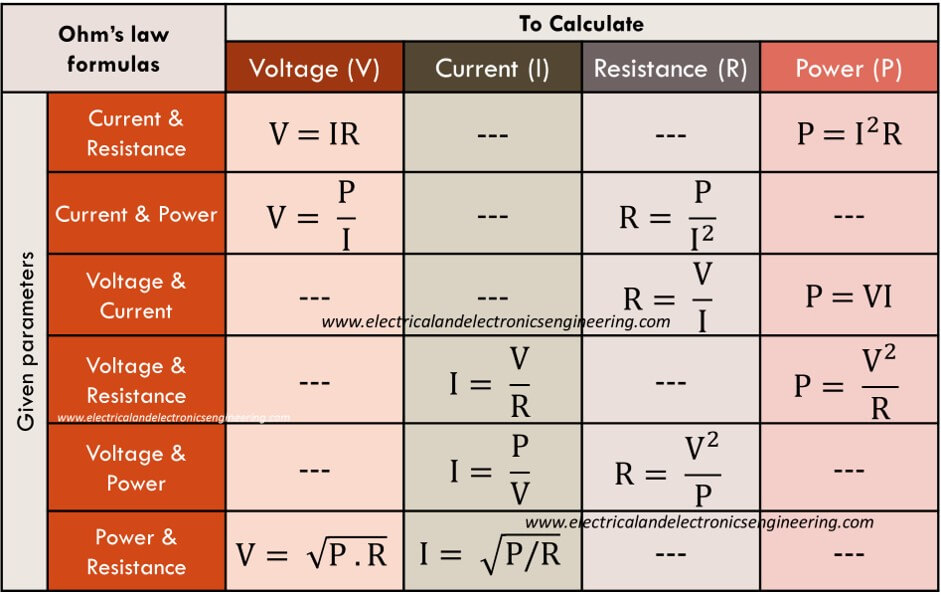Ohm’s law is one of the fundamental principles of Electrical and Electronics Engineering which relates current flow across resistive circuits. Ohm’s law formula sheet has all formulas, useful equations and 12 different manipulations of Ohm’s law that are used in circuit analysis. Let’s start with the basic formula first:
V = IR … (Mathematical form of Ohm’s law)
After combining the above statement with Power law (P = VI) and doing substitution we have 12 different formulas that can be used to calculate either of the two unknown parameters from voltage, current, resistance, and power when two factors are known. The chart below displays complete Ohm’s law formula sheet:

Let’s solve some examples to understand this:
Example 1: An unknown resistor dissipates 0.5 watts of power when a 12 volts source connects to it. Find the current passing through the circuit.
Solution: In the above case, the power is known to be 0.5 watts, while the voltage is also known. From 5th row of second column in chart, we’ll be using the formula: I = P/V to find current
I = 0.5 watts / 12 V = 0.04 Amps
So, a current of 0.4 Amps will be flowing through the area.
Ohm’s law formulas to Calculate:
- Voltage from:
- Current and Resistance: V = IR
- Current and Power: V = P/I
- Power and Resistance: V= SQRT (P.R)
- Current from:
- Voltage and Resistance: I = V/R
- Current from Volage and Power: I = P/V
- Current from Power and Resistance: I = SQRT (P/R)
- Resistance from:
- Voltage and Current: V = IR
- Current and Power: R = P/(I^2)
- Voltage and Power: (V^2)/P
- Power from:
- Current and Resistance P = (I^2)R
- Voltage and Current: P = VI
- Voltage and Resistance: P = (V^2)/R